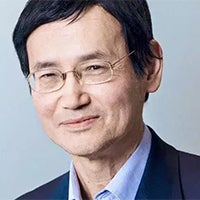Some fifteen years after terrorism risk modeling began after 9/11, it is still suggested that the vagaries of human behavior render terrorism risk modeling an impossible challenge, but still the core principles underlying terrorism risk modeling are not widely appreciated. Terrorism risk modeling, as it has developed and evolved from an RMS perspective is unique in being based on solid principles, which are as crucial as the laws of physics are to natural hazard modeling. The recent high-profile terrorist attacks in London, Stockholm, and Paris adhere to many of these principles.
On March 22, a Wednesday afternoon, Khalid Masood drove a rented Hyundai SUV off the Westminster Bridge Road in Central London, and accelerated at high speed into pedestrians walking across the bridge. Several of them were killed, one was thrown over the bridge, four dozen more were injured, some critically. The compact SUV then crashed into railings outside the Houses of Parliament, whereupon Khalid Masood ran through an open entry gate, and was confronted by an unarmed policeman, PC Keith Palmer, whom he stabbed to death. The terrorist was then shot dead by the bodyguard of the U.K. defense minister. This was the most serious terrorist attack in UK since the London Transport bombings of July 7, 2005.
Just over two weeks later, mid-afternoon on April 7, Rakhmat Akilov hijacked a 30-tonne brewery truck making a delivery at the Caliente Tapas Bar on Adolf Fredriks Kyrkogata, a side street off Drottninggatan – one of Stockholm’s main city center shopping streets. The delivery driver stood in front of the truck attempted to stop the hijacker, jumping out the way as Akilov accelerated at him. Akilov immediately drove at speed onto Drottninggatan, a pedestrian-only street, hitting pedestrians before crashing after 500 meters into the Åhléns City department store. Five people were killed and fifteen injured. A home-made bomb was found in the lorry’s cab but had not been detonated. Akilov fled the scene, but was arrested in the early hours of April 8, in Märsta, some 25 miles (39 km) north of Stockholm.
And, on the evening of April 20, Karim Cheurfi drove a car alongside a police van parked outside an address at 102 Avenue des Champs-Élysées, arguably the most prestigious street in Paris, and less than half a mile from the symbolic Arc de Triomphe. Three police officers in the van were guarding the entrance to the Turkish Cultural and Tourism Office, when Cheurfi fired an AK-47 rifle at the van, killing one, and injuring three, the two police officers and a female tourist. Cheurfi fled on foot, firing at pedestrians, before being shot and killed by police officers arriving on the scene.
I give talks on how the terrorist threat is shifting; the London attack happened as I was mid-way through a talk for the RMS annual conference. I was notified of the attack immediately I finished. The explanations in my talk, and discussing these principles underlying terrorism risk modeling had resonated closely with what had transpired. Someone suggested I had actually predicted the event. In jest, he advised against making any earthquake predictions. Earthquakes are of course unpredictable. But it is a measure of the sustained progress in terrorism risk modeling, that some degree of predictability is attainable for future terrorist attacks. This is because terrorism is a control process. Unlike natural hazards, which are unrestrainable, western counter-terrorism forces greatly restrict the domain of possible actions that terrorists can undertake without being arrested. Terrorists can be brought to justice in a way that hurricanes, earthquakes and floods cannot.
Examining the recent high-profile terrorist attacks in London, Stockholm and Paris illustrates many of these principles:
Principle A: Terrorist Attacks Leverage Maximum Impact
Terrorist resources are a tiny proportion of those of a nation state. Accordingly, terrorist attacks aim to achieve maximum impact for a finite input allocation of resources.
Principle B: Terrorism is the Language of being Noticed
According to ISIS, “half of Jihad is media.” Publicity is needed to promote the terrorist agenda, and attract recruits.
Principle C: Target Substitution Displaces Terrorist Threat
Game theory embodies the principle of target substitution: terrorists will attack the softer of two similarly attractive targets.
Principle D: Terrorists Follow the Path of Least Resistance in Weaponry
Terrorists improvise weapons according to availability. Vehicle ramming is a shift from chemical energy of explosives to transport kinetic energy.
Principle E: Too Many Terrorists Spoil the Plot
The chance of a plot being interdicted increases with the number of operatives.
Principle F: Terrorism is a Thinking Man’s Game
Terrorists need to be smart to coerce powerful nation states to change their policies.
Principle G: Terrorism Insurance is Effectively Insurance Against the Failure of Counter-Terrorism
Terrorists occasionally slip through the Western Alliance counter-terrorism surveillance net.
Principle H: Counterfactual Analysis Matters
Mark Twain remarked, “History doesn’t repeat itself, but it does rhyme.” Most events have either happened before, nearly happened before, or might have happened before.
To avoid excessive abstraction, one of the best ways of learning the principles of any subject is through an exposition using illustrative real examples. Not far from Westminster is the British Museum, where the director, Neil MacGregor, has cleverly and succinctly explained the history of the world in a hundred objects from the museum. Outside the classroom, the basic principles of hurricane, earthquake and flood risk analysis can be learned and comprehended from the study of any notable event.
I have written a paper, the purpose of which is to explain the basic principles of quantitative terrorism risk modeling, through one specific recent terrorist event. I first did this after the Charlie Hebdo attack in Paris on January 7, 2015, and I have repeated this after the attack on its sister city of London on March 22, 2017.
For your copy of “Understanding the Principles of Terrorism Risk Modeling From the Attack in Westminster”, please click here.





